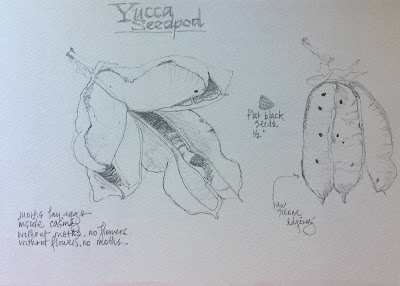What do you see when you look closely at something?
In elementary school, I became nearsighted, so nearsighted that my world without glasses looked like an Impressionist painting -- all blurred edges and strong contrasts. With glasses, the world came back into focus.
I spent hours drawing. I didn't know about the 10,000 hours of practice that Malcolm Gladwell espoused to become an expert at something. I just liked to draw. I made page after page of fashion designs, drew faces, and used the examples in the Walter Foster series of how-to-draw books to help me understand what was underneath the outside layer of what I was drawing.
Though I've studied perspective, my drawings of buildings can still be wonky. I have watched architects in a watercolor class draw preliminary drawings of buildings before they put paint to paper. Their understanding of the inside structure and perspective shows in the paintings that result.
 |
| Backside of an old building in SF by Martha Slavin |
My parents kept several books of anatomy, tucked in drawers because of the nude photographs. Not too hidden so they could be found easily, and not really forbidden to be perused. One of the books was a pop-up book that showed the different systems inside the human body. I loved unfolding each layer to see the muscles, then the blood vessels, and finally the bones. In another book, I found photographs of the human body at different stages of life. The photos showed the changes in head size and body shape from infancy to old age. I still remember looking at the changes to the ear as a person advances in age.
 |
| Doodles of an older and younger woman. How large the older woman's ears are! |
At a museum, I would rather spend time in a room full of artists' drawings than in a room with finished paintings or sculptures. The drawings give me a window into the workings of that artist's mind. My favorite sculptures are Michaelangelo's unfinished one where the bodies seem to grow out of the stone.
 |
| courtesy of Academia Gallery/Wikipedia |
All those early exercises developed my interest in layers. What lays below the surface of anything? A good question to ask about everything we do. First, how about asking that question about where you live?


















